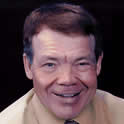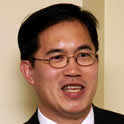by Rich Junker and Andrew Chan


Rich Junker Andrew Chan
Over the past 18 months or so, I’ve had an outstanding learning experience as co-editor of CompAct, from the writing perspective. As years pass, I see myself ever more as a writer, which I never would have imagined early in my actuarial career. Perhaps you are seeing a similar trend.
Two of our focuses as actuaries are technology and interpreting data for our customers. A key to communicating results is strong writing skills. I’ve encountered several resources you will find useful in making your written actuarial communications clear and potent.
- First is the writer’s mini-Bible, The Elements of Style, by William Strunk, updated repeatedly by E.B. White ( he of Charlotte’s Web fame). In a brief space, Strunk lays out the principal requirements of plain English style. He concentrates on the rules of usage and principles of composition most commonly violated. I ’m told that professional writers wear out one copy yearly of this slim paperback. It is available at Amazon.com
- Second is a book I first encountered nearly 20 years ago, now in its 35th anniversary edition. It long reached the million copies sold milestone. On Writing Well, by William Zinsser, is also available at Amazon.com.
- Third is a related book, Writing Places, again by William Zinsser, describing his personal growth as a writer. He begins with his early days in the 1940s as a reporter for the New York Herald-Tribune, then traces through his many freelance roles and other employments. He relates how he came to be a teacher and author who has inspired countless people to reinvent themselves as writers.
In presenting our actuarial analyses, we are often called on to speak of what we have written. The Toastmasters organization offers advanced communication manuals targeted to business presentation tools, including Internet technology. Their advanced Communications and Leadership manuals are challenging and strongly focused on business presentations.
The following article by Nate Worrell, FSA, MAAA, appeared in Contingencies magazine. He demonstrates how Toastmasters can be an integral element of your personal competency plan Toastmasters and the Competency Framework.
You can explore their program at: Toastmasters.org.
Business Presentations
Speaking up at the office
Every day, employees of various companies around the world find themselves in career-defining speaking situations. Presentations like these often involve high stakes and are presented to busy people with the power to influence careers. Different business presentations can make or break your career. The technical briefing, a straightforward presentation to inform, can cause trouble if you lose your audience. For the proposal, you must advocate an idea, product or course of action ... and convince others to agree. You may have to present complicated material to a nontechnical audience. To help with job jitters, professional panic or talk trauma, here is some information:
- Proposals and Pitches
- Technical Briefings
- Presenting Across Borders
- Introducing a Speaker
- Visual Aids & PowerPoint
In our emulation of Francis Bacon, “Reading maketh a full man; conference a ready man; and writing an exact man,” we approach our objective of becoming the compleat actuarial communicator.